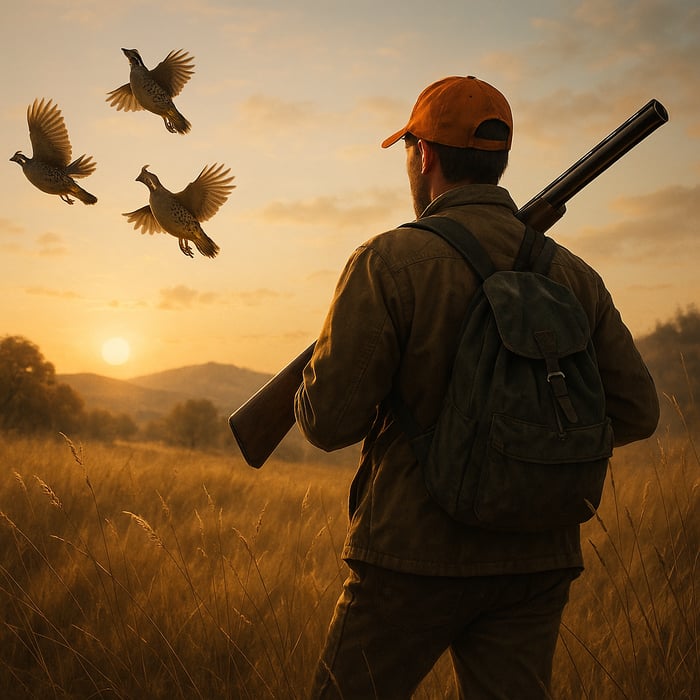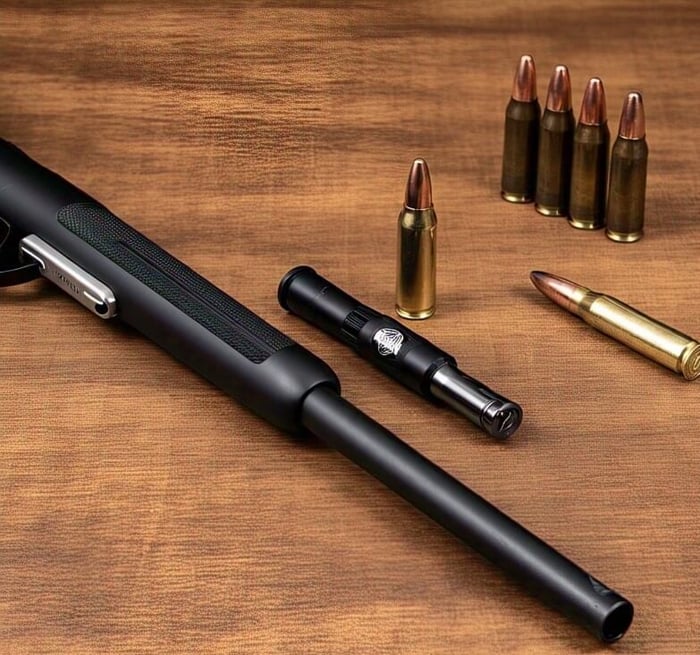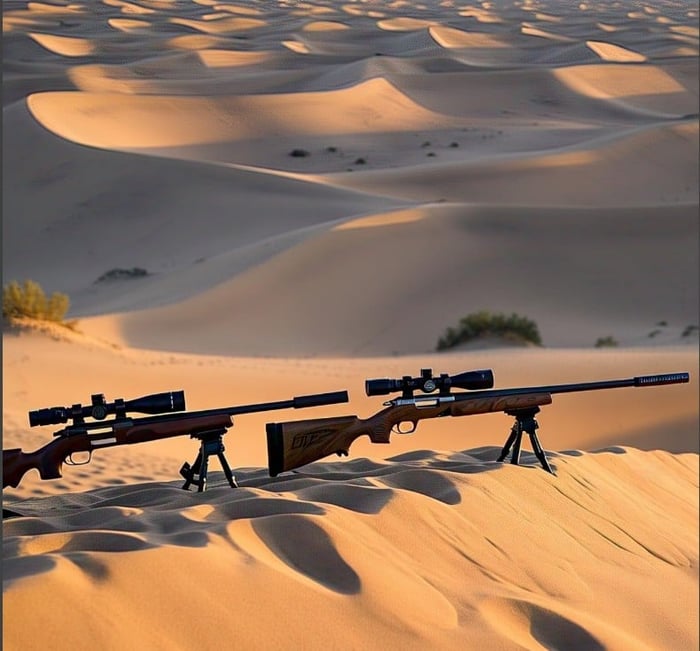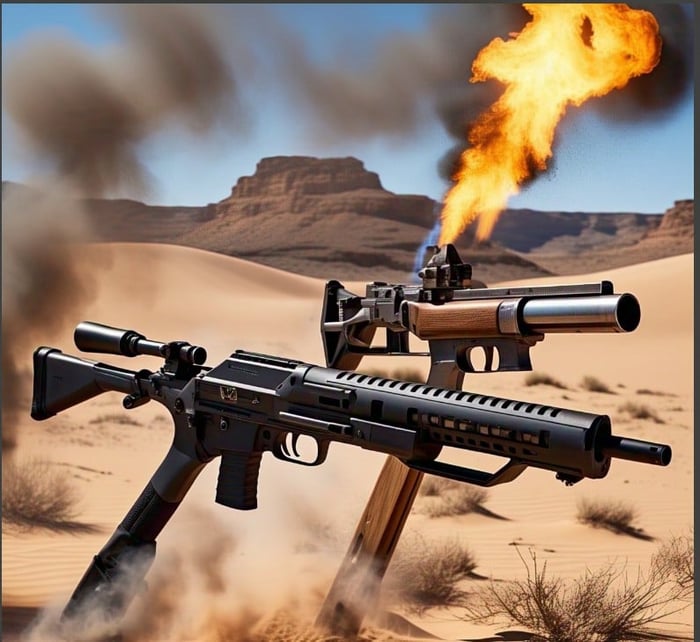California’s diverse landscapes—from golden grasslands to rugged desert washes—make it a premier destination for upland hunters chasing the fast-flying, elusive quail. Quail hunting California is a beloved tradition, blending the thrill of flushing coveys, the skill of working with dogs, and the beauty of the state’s wild places. Whether you’re a local with a trusty shotgun or a visitor planning your first hunt, understanding the nuances of quail hunting California is essential for a successful and legal season.
What Is Quail Hunting California All About?
What makes quail hunting California so special? Quail hunting in California involves pursuing three primary species—California quail, mountain quail, and Gambel’s quail—across the state’s varied terrains, from the Central Valley’s agricultural fields to the Mojave Desert’s arid scrub. Managed by the California Department of Fish and Wildlife (CDFW), quail hunting California combines challenging fieldwork, often with pointing or flushing dogs, and the excitement of tracking these small, quick birds. Success requires knowledge of seasons, regulations, habitats, and techniques, making quail hunting California a rewarding pursuit for hunters of all levels.
Why Quail Hunting California Stands Out
California’s ecological diversity—coastal ranges, inland valleys, high mountains, and deserts—creates ideal quail habitats. The state’s mild climate supports a long hunting season, and its mix of public lands (e.g., National Forests, BLM areas) and private ranches offers ample access. Quail hunting California is unique for its scenic beauty, from oak-dotted hills in Monterey County to sun-baked washes in Imperial County, and the challenge of outsmarting coveys that scatter in all directions. Whether you’re after the iconic California quail or the elusive mountain quail, quail hunting California delivers adventure and tradition.
Quail Species in California
Quail hunting California targets three distinct species, each with unique habits and habitats:
California Quail (Valley Quail): The state bird, found statewide in grassy foothills, oak savannas, and agricultural edges (e.g., Kern, Fresno counties). Their teardrop plume and large coveys (10-50 birds) make them a favorite for quail hunting California.
Mountain Quail: Inhabits higher elevations in the Sierra Nevada, coastal ranges, and northern forests (e.g., Shasta, Humboldt counties). They’re elusive, preferring dense brush or coniferous forests, and form smaller coveys.
Gambel’s Quail: Thrives in desert regions like the Mojave and Colorado Deserts (e.g., Imperial, Riverside counties). They favor arid scrub near water sources, with coveys that stick close to cover.
Understanding these species’ behaviors is key to mastering quail hunting California.
Quail Hunting California: Seasons and Regulations for 2025-2026
When is quail hunting California season? The CDFW regulates quail hunting to ensure sustainable populations, with seasons and rules varying slightly by region. Below are the projected 2025-2026 quail hunting seasons, based on 2024 patterns (as 2025-2026 specifics may be released closer to the season).
Quail Hunting California Season Dates
Quail hunting California generally runs from mid-October to early February, with the following projected dates:
General Season (Statewide): October 18, 2025 – February 8, 2026
Includes California, mountain, and Gambel’s quail across most zones.
Archery-Only Season: Select areas (e.g., Central Valley, Southern California) may allow archery hunting before the general season, typically late September to mid-October (e.g., September 27 – October 17, 2025).
Falconry Season: Extends beyond the general season, often February 9-28, 2026, for falconry hunters targeting quail.
Youth Hunt: Special youth days for hunters under 18, accompanied by a licensed adult, may occur (e.g., October 11-12, 2025).
Seasons may vary slightly in zones like the Mojave Desert or Sierra Nevada, so check the CDFW’s 2025-2026 Upland Game Bird Regulations for precise dates. Staying informed is critical for quail hunting California.
Bag and Possession Limits
Quail hunting California has clear limits to protect quail populations:
Daily Bag Limit: 10 quail per day (any combination of California, mountain, or Gambel’s quail).
Possession Limit: 30 quail after the first day, 20 on the first day.
Hunters must keep quail heads or fully feathered wings attached for species identification during transport, as required by CDFW. These limits promote sustainable quail hunting California for future generations.
Licensing and Legal Requirements
To participate in quail hunting California, you need:
Hunting License: Resident (~$55), non-resident (~$185), or junior (under 16, ~$15), available through CDFW’s Online License Sales or authorized agents.
Upland Game Bird Stamp: ~$10, required for quail, pheasant, and other upland birds.
Hunter Education: Mandatory for first-time hunters, with online, in-person, or home-study courses offered by CDFW.
Lead-Free Ammunition: Non-lead shot (e.g., steel, bismuth, tungsten) is required statewide for quail hunting California, protecting wildlife like California condors from lead poisoning.
Additional requirements include obtaining permits for certain public lands (e.g., Mendota Wildlife Area) and securing written permission for private lands. Always carry your license, stamp, and proof of hunter education while quail hunting California.
Top Locations for Quail Hunting California
Where is the best quail hunting California? California’s public and private lands offer diverse opportunities for quail hunting. Below are the top regions for quail hunting California in 2025-2026, each with unique habitats and species.
Central Valley (Kern, Fresno, San Joaquin Counties)
The Central Valley is a quail hunting hotspot, with vast grasslands, grain fields, and oak savannas teeming with California quail. Public lands like the Carrizo Plain Ecological Reserve (Kern County), Mendota Wildlife Area (Fresno County), and Los Banos Wildlife Area (Merced County) provide excellent access for quail hunting California. Private ranches near Bakersfield or Fresno offer guided hunts with higher covey counts, often including dog handlers. Coveys gather near water sources, fence lines, or harvested fields, making this region ideal for hunters with pointing dogs.
Southern California (Riverside, Imperial, San Diego Counties)
The Mojave and Colorado Deserts are prime for Gambel’s quail, with public lands like the Imperial Wildlife Area, BLM areas near Palm Springs, and Anza-Borrego Desert State Park offering open access. Quail hunting California in these arid zones requires scouting near mesquite, creosote, or water holes, as Gambel’s quail stick to sparse cover. Private preserves in the Coachella Valley or near Brawley provide guided hunts with lodging, catering to hunters seeking a premium experience. The desert’s warm, dry climate suits early-season hunts.
North-Central (Shasta, Tehama, Butte Counties)
The oak savannas, rolling hills, and forested foothills of Shasta, Tehama, and Butte counties host both California and mountain quail. Public lands like the Lassen National Forest, Paynes Creek Wetlands, and Upper Butte Basin Wildlife Area are hotspots for quail hunting California. Mountain quail are elusive, hiding in dense brush or coniferous forests, while California quail thrive near streams, clearings, or berry patches. The region’s rugged terrain and cooler fall weather demand sturdy gear and good dogs.
Coastal Ranges (Monterey, San Luis Obispo, Santa Barbara Counties)
The coastal hills of Monterey, San Luis Obispo, and Santa Barbara counties offer scenic quail hunting California for California quail in oak woodlands, chaparral, and grassy slopes. Fort Hunter Liggett (public with permits) and private ranches near Paso Robles or Santa Ynez are prime locations. The mild climate (50-70°F) and rolling terrain make this area ideal for hunters with flushing dogs, as coveys hide in thick brush or near vineyards. Public lands like Los Padres National Forest also provide access with proper planning.
Sierra Nevada (Placer, Nevada, El Dorado Counties)
Higher elevations in the Sierra Nevada, such as the Tahoe National Forest or Eldorado National Forest, are home to mountain quail, with some California quail in lower foothills. Quail hunting California here is challenging due to steep slopes, dense forests, and rocky terrain, but the solitude and stunning views are worth it. Scout near springs, berry patches, or clearings for mountain quail, which form smaller coveys (5-15 birds). California quail may be found in grassy draws at lower elevations. This region suits experienced hunters comfortable with backcountry navigation.
Advanced Strategies for Quail Hunting California
Success in quail hunting California requires preparation and adapting to California’s diverse habitats and quail behaviors. Here are advanced strategies to elevate your hunt, tailored to California’s species and terrains.
Scouting and Habitat Analysis
Quail are habitat-specific, so effective scouting is crucial for quail hunting California:
California Quail (Central Valley, Coastal Ranges): Scout grassy hills, agricultural edges, or oak savannas with brushy cover (e.g., Kern County’s Carrizo Plain). Look for tracks, droppings, or dust baths near water tanks, fence lines, or grain fields. Coveys roost in low shrubs at night.
Mountain Quail (Sierra Nevada, North-Central): Focus on high-elevation brush, coniferous forests, or clearings (e.g., Shasta County’s Lassen National Forest). Check near springs, berry patches, or manzanita thickets, as mountain quail are shy and prefer dense escape cover.
Gambel’s Quail (Southern Deserts): Search desert scrub near mesquite, creosote, or water holes (e.g., Imperial County’s Imperial Wildlife Area). Gambel’s quail stay close to cover, so look for tracks or calls near washes or rocky outcrops.
Use apps like onX Hunt or Gaia GPS to map public lands (e.g., BLM, National Forests) or private parcels with permission. Scout 1-2 weeks before the season (early October 2025) to pinpoint active coveys, as quail shift with food (seeds, berries) and water availability. Binoculars help spot coveys from a distance without spooking them.
Leveraging Dogs for Quail Hunting California
Dogs are a game-changer for quail hunting California, locating hidden coveys and retrieving downed birds. Popular breeds include:
Pointing Dogs: English setters, German shorthairs, or pointers (e.g., used in Fresno County) excel in open fields, holding a point until you approach. They’re ideal for California quail in the Central Valley.
Flushing Dogs: Labradors, springer spaniels, or Boykin spaniels (e.g., used in Monterey County) push quail from thick brush, perfect for mountain quail or dense coastal cover.
Train dogs to work within 20-50 yards, using commands like “whoa” for pointers or “hup” for flushers. Equip them with GPS collars (e.g., Garmin Alpha 300) to track their position in rugged terrain like the Sierra Nevada. A well-trained dog can triple your success in quail hunting California, especially in thick cover where quail hide.
Shotgun and Ammunition Selection
Choosing the right firearm and ammo is critical for quail hunting California:
Shotguns: 12-gauge or 20-gauge shotguns (lighter for long walks) with improved cylinder or modified chokes are ideal for close shots (15-30 yards). Over-under (e.g., Beretta 686 Silver Pigeon), semi-auto (e.g., Benelli Ethos), or side-by-side (e.g., CZ Bobwhite) models are popular for their reliability and balance.
Ammunition: Non-lead shot (steel, bismuth, tungsten) in #6, #7.5, or #8 sizes ensures quick, ethical kills. Brands like Federal Premium Hi-Bird or Winchester AA Non-Toxic are widely used. Carry 1-1.25 oz loads for versatility.
Practice: Quail fly erratically, so practice at skeet or trap ranges to mimic their zig-zag patterns. Sporting clays courses (e.g., Raahauges in Dunnigan) simulate upland scenarios.
Lead-free ammo is mandatory for quail hunting California under California’s 2019 lead ban, protecting scavengers like condors. Test your shotgun’s pattern with non-lead shot to ensure tight groupings at 20-30 yards.
Advanced Hunting Techniques
Work Coveys Strategically: When a covey flushes, mark where birds land using landmarks (e.g., a lone oak or rock pile). Quail often regroup within 100-200 yards, so approach quietly for a second flush, common in Central Valley hunts. Use a partner to block escape routes.
Master Quail Calls: Mimic the “chi-ca-go” assembly call of California quail or the whistled “toot” of Gambel’s quail with a mouth call (e.g., Primos Quail Call). Calls locate coveys or regroup scattered birds, especially in desert washes or oak thickets.
Time Your Hunts: Quail feed in open areas at dawn or dusk, making these prime times for quail hunting California. Midday hunts in dense cover (e.g., Shasta County brush) can still yield birds, as quail seek shade.
Use Terrain to Your Advantage: In hilly areas (e.g., Monterey County), approach coveys from above to force downhill flushes, giving clearer shots. In deserts (e.g., Imperial County), walk washes to funnel quail into open shooting lanes.
Hunt in Teams: Two or three hunters cover more ground, improve safety, and increase flushes, especially in vast areas like the Carrizo Plain. Coordinate with hand signals to avoid spooking coveys.
These techniques, refined for quail hunting California, maximize your chances of a successful hunt.
Gear Recommendations for Quail Hunting California
Quality gear enhances comfort and efficiency in quail hunting California. Here are essentials beyond shotguns:
Upland Hunting Pants: Durable, water-resistant pants like Pyke Gear Dakota Upland Brush Pants or Filson Upland Brush Pants protect against wet grass, thorns, or cactus in Kern or Imperial counties. Look for stretch fabrics and DWR coatings.
Boots: Lightweight, waterproof boots with ankle support (e.g., Danner Sharptail, Irish Setter Vaprtrek) handle long walks in Fresno County fields or rocky Shasta County hills. Snake boots (e.g., LaCrosse Venom) add protection in desert zones.
Upland Vest or Pack: An upland vest (e.g., Orvis PRO Series Upland Vest) or lightweight backpack (e.g., Badlands Upland Pack) holds shells, water, birds, and dog treats. Blaze orange accents meet safety requirements in public lands.
Gloves and Headwear: Lightweight shooting gloves (e.g., SITKA Shooter Gloves) and a blaze orange cap or camo hat (e.g., Browning Upland Cap) protect hands and ensure visibility.
Dog Gear: GPS collars (e.g., Garmin Alpha), portable water bowls, and a canine first-aid kit keep your dog safe and hydrated in remote areas like the Tahoe National Forest.
Accessories: A folding knife, multi-tool, and compact binoculars (e.g., Vortex Diamondback 8x28) aid in field dressing, navigation, and spotting coveys from afar.
Invest in gear tailored to the terrain and weather of quail hunting California for a seamless experience.
Cultural and Historical Significance of Quail Hunting California
hunting California is deeply rooted in the state’s history and culture, connecting hunters to the land and each other.
Indigenous Hunting Traditions
Native tribes like the Chumash in Monterey County, Yokuts in the Central Valley, and Cahuilla in Riverside County hunted quail with nets, traps, and small bows, using feathers for regalia and meat for sustenance. Their respect for seasonal cycles and wildlife informs modern conservation practices in hunting California, emphasizing sustainable harvests.
Modern Upland Hunting Community
California’s upland hunters form a tight-knit community, gathering at events like the Sacramento International Sportsmen’s Expo (January 2025), Pheasant Fest’s California booths, or local Quail Forever chapter meetings. hunting California thrives in places like Kern County ranches or San Luis Obispo lodges, where hunters swap stories of epic flushes or legendary dogs over coffee or whiskey. Youth hunts (e.g., October 11-12, 2025) and women’s programs (e.g., California WomenHunt) introduce new hunters, ensuring the tradition endures.
Quail Hunting in California Media
Media celebrates quil hunting California through shows like “California Sportsman” on Sportsman Channel, YouTube channels like Project Upland, and podcasts like The Upland Experience. Instagram and Reddit (r/Uplandhunting) feature hunters showcasing Central Valley coveys or desert Gambel’s quail, sharing tips for spots like Mendota Wildlife Area or dog training for mountain quail. These platforms amplify the culture of qual hunting California.
Overcoming Challenges in Quail Hunting California
Qual hunting California presents challenges, but preparation turns obstacles into opportunities.
Navigating Complex Regulations
California’s lead-free ammo requirement, zone-specific seasons, and public land permits can be daunting. Use CDFW’s Hunting Digest (online or app) or onX Hunt to confirm qual hunting California rules for your area (e.g., Carrizo Plain vs. Imperial Wildlife Area). Bookmark CDFW’s website for updates on season dates or permit requirements.
Crowded Public Lands
Popular public lands like Mendota Wildlife Area or Los Banos Wildlife Area get busy on opening weekends (October 18-19, 2025). Hunt midweek, early mornings, or less-visited BLM lands in Riverside County for quieter qual hunting California. Arrive before dawn to secure parking at trailheads.
Diverse and Rugged Terrain
Steep Sierra Nevada slopes (mountain quail), dense Central Valley brush (California quail), or vast desert washes (Gambel’s quail) challenge mobility and navigation. Wear supportive, waterproof boots (e.g., Danner Sharptail) and use trekking poles for qual hunting California in rugged areas like Tahoe National Forest. GPS apps help navigate remote terrain.
Weather Variability
Hot early seasons (October, 70-85°F) in the Central Valley or wet winters (January, 40-50°F) in coastal ranges affect quail behavior and hunter comfort. Hunt at dawn/dusk in fall to catch feeding coveys, and use waterproof gear (e.g., Orvis ToughShell pants, Gore-Tex boots) for winter qual hunting California. Carry a hydration pack for desert hunts.
Locating Elusive Coveys
Quail are masters of concealment, especially mountain quail in dense brush or Gambel’s quail in sparse desert cover. Scout with trained dogs, use assembly calls (e.g., Primos Quail Call), and focus on food (seeds, berries) or water sources to find coveys. Patience and persistence are key for qual hunting California.
Habitat Loss and Drought
Urban sprawl and drought can reduce quail habitats in the Central Valley or Mojave Desert, shrinking covey sizes. Support conservation groups like Quail Forever, which restore grasslands, to ensure robust qual hunting California populations.
The Future of Quail Hunting California
What’s next for qual hunting California? Several trends are shaping its future:
Conservation and Habitat Restoration
Organizations like Quail Forever, California Waterfowl Association, and CDFW’s Upland Game Bird Program restore habitats (e.g., grasslands in Kern County, wetlands in Fresno County) to boost quail populations. Projects like the Carrizo Plain Habitat Restoration enhance qual hunting California by improving nesting cover and food sources. Hunters fund these efforts through license and stamp fees, ensuring sustainability.
Technological Advancements
Apps like onX Hunt and HuntStand provide real-time qual hunting California data, mapping public lands, water sources, and property boundaries. GPS dog collars (e.g., Dogtra Pathfinder), lightweight carbon-fiber shotguns (e.g., Benelli Ultralight), and smart optics (e.g., Vortex rangefinders) streamline hunts. Drones may soon aid in scouting remote areas like the Sierra Nevada.
Engaging a Diverse Hunting Community
Youth hunts (e.g., October 11-12, 2025), women’s programs (e.g., WomenHunters), and veteran events in counties like Shasta or San Luis Obispo are growing the upland community. Mentorship programs teach regulations, dog training, and ethics, ensuring qual hunting California remains vibrant. Social media campaigns highlight diversity, attracting new hunters.
Adapting to Environmental Challenges
Climate change, including drought, wildfires, and habitat fragmentation, threatens quail populations in the Central Valley and deserts. CDFW’s adaptive management—adjusting bag limits, season dates, or habitat policies—will preserve qual hunting California. Hunters can advocate for public land access and support anti-sprawl initiatives to protect hunting grounds.
Cultural Evolution
The rise of “locavore” hunting, where hunters value quail as sustainable, organic food, is reshaping qual hunting California. Chefs and food blogs feature quail recipes (e.g., grilled California quail with sage), tying the hunt to culinary arts. This trend may draw urban Californians to the sport, blending tradition with modern values.
Conclusion: Thriving in Qual Hunting California for 2025-2026
Quail hunting California is an unparalleled upland adventure, offering the chance to flush California quail in Kern County’s golden fields, pursue mountain quail in Shasta’s forested hills, or chase Gambel’s quail in Imperial’s sunlit deserts. By mastering the 2025-2026 season (October 18, 2025 – February 8, 2026), navigating regulations, scouting prime spots like Carrizo Plain, Mendota Wildlife Area, or Imperial Wildlife Area, and using advanced strategies like dog work and calls, you can fill your game bag and make lasting memories. Invest in quality gear—shotguns, non-lead ammo, upland pants, and dog collars—honor California’s hunting heritage, and support conservation to keep quail huntin California thriving. Whether you’re a seasoned hunter or a newcomer, grab your gear, leash your dog, and embrace the joy of quail huntin California in 2025-2026.





